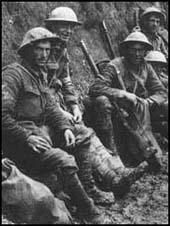Austria in 1914

Union between Austria and Hungary took place in 1867. Overall political authority was held by Emperor Franz Josef. Over 51 million people lived in the 675,000 square kilometres of the empire. The two largest ethnic groups were Germans (10 million) and Hungarians (9 million). There were also Poles, Croats, Bosnians, Serbians, Italians, Czechs, Ruthenes, Slovenes, Slovaks and Romanians. Overall, fifteen different languages were spoken in the Austro-Hungarian empire.
Austria and Hungary shared the same currency but other state functions rested with the national governments. Both states had unelected upper houses and elected lower houses of parliament. Hungarian politicians complained that the Austrian parliament was too powerful and that they were considered to be junior partners.
The Austro-Hungarian government feared attack from Russia . In 1879 Austro-Hungary and Germany agreed to form a Dual Alliance. This became the Triple Alliance when in 1882 it was expanded to include Italy. The three countries agreed to support each other if attacked by either France or Russia.
The Triple Alliance was renewed at five-yearly intervals. The formation of the Triple Entente in 1907 by Britain, France and Russia, reinforced the belief that they needed a military alliance.
The Austro-Hungarian Imperial Army was officially under the control of the Commander-in-Chief, Emperor Franz Josef. By 1914 Josef was 84 years old and the chief of staff, Count Franz Conrad, had more power over the armed forces. Conrad, favoured an aggressive foreign policy and advocated the use of military action to solve Austro-Hungary's territorial disputes with Italy and Serbia.
The Austro-Hungarian Navy was fairly small. By 1914 it had 16 battleships, 5 cruisers, 18 destroyers and 5 submarines. Austro-Hungary neglected military aviation and in 1914 the Austro-Hungarian Air Service only had 35 aircraft and one airship.
